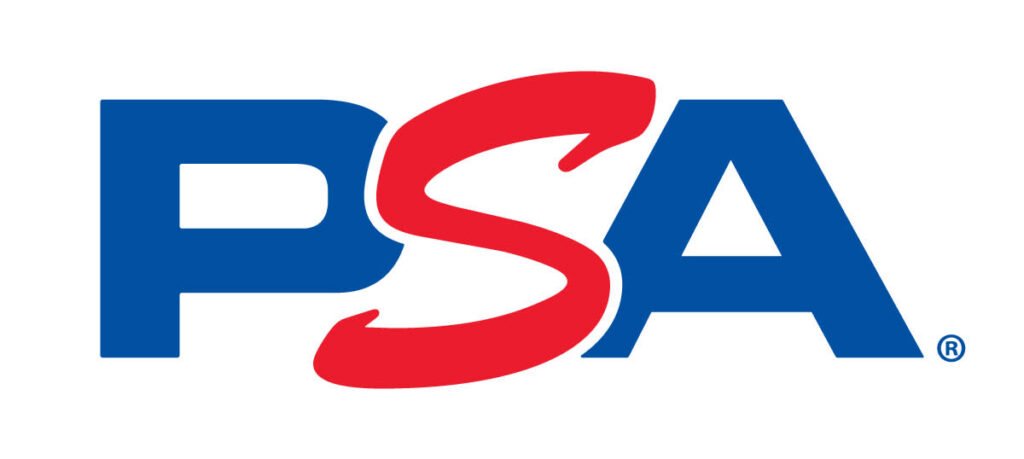In the world of collectible card trading, ensuring the authenticity of your precious cards becomes paramount. With so many counterfeit cards flooding the market, it’s crucial to have a guide that helps you navigate the murky waters. This article serves as your trusty companion, providing valuable insights into the process of grading card authenticity. From understanding the intricacies of card grading companies to identifying tell-tale signs of counterfeit cards, this guide equips you with the knowledge needed to protect your collection from fraudulent imitations. With this comprehensive resource at your disposal, embark on a journey towards becoming a savvy collector who can confidently distinguish the genuine from the fake.
Understanding Card Grading
What is card grading?
Card grading refers to the evaluation and assessment of collectible cards, such as trading cards, sports cards, or gaming cards, to determine their authenticity, condition, and overall quality. It involves assigning a grade or a numerical value to the card based on various factors, including the card’s physical attributes, printing quality, and any potential signs of alteration or counterfeiting.
Why is card grading important in determining authenticity?
Card grading is crucial when it comes to determining the authenticity of a collectible card. With the growing popularity of card collecting and the rise of counterfeit cards in the market, it has become increasingly important to have a reliable and standardized method for assessing the authenticity of cards. Grading not only provides buyers with confidence in the quality and authenticity of their purchases but also helps preserve the overall integrity and value of the card-collecting hobby.
Key factors considered in card grading
When evaluating and grading a collectible card, several key factors are taken into consideration. These factors include the card’s centering (how evenly the image is positioned within the borders), its surface condition (including any scratches, creases, or other damage), the corners and edges (looking for wear, chipping, or rounding), the card’s overall print quality (including color clarity and registration), and the presence or absence of any alterations or counterfeit indicators. Grading companies may use different scales or criteria to assess each of these factors and arrive at a final grading score or grade for the card.
Choosing a Card Grading Service


Researching reputable grading companies
When choosing a card grading service, it is vital to conduct thorough research to identify reputable companies with a proven track record of accurate and reliable grading. Look for grading companies that have been in the industry for a significant period, have a strong reputation among collectors and dealers, and employ knowledgeable and experienced professionals who possess expertise in various card categories.
Comparing grading service options
Once you have identified a few reputable grading companies, compare their services and offerings to find the one that best suits your needs. Consider factors such as turnaround time (how long it takes for your cards to be graded and returned to you), grading fees (the cost per card), insurance coverage (protection against loss, damage, or theft during the grading process), and any additional services offered, such as card encapsulation or storage options.
Understanding grading fees and turnaround times
Grading fees can vary significantly depending on the grading company, the card’s value, and the desired turnaround time. It is important to understand the fee structure of each grading service and assess how it aligns with your budget and grading needs. Turnaround times also vary, ranging from a few weeks to several months, so consider your time constraints and preferences when selecting a grading service.
Identifying Counterfeit Cards
Signs of counterfeit cards
Counterfeit cards can be challenging to spot, but there are several signs that collectors should look out for. These include discrepancies in the card’s design, such as variations in color, font, or artwork compared to authentic examples. Other red flags may include poor print quality, irregular edges or corners, misspellings or grammatical errors on the card, and the absence of holograms or security features that are typically present on genuine cards.
Distinguishing between genuine and fake cards
To distinguish between genuine and fake cards, collectors should familiarize themselves with the characteristics and details of authentic cards. This can be achieved by studying official card guides, reference books, or online resources that provide comprehensive information and images of legitimate cards. By comparing these authentic examples to the suspect card in question, collectors can identify any inconsistencies or deviations that may indicate it is a counterfeit.
Common mistakes to avoid when identifying counterfeit cards
When attempting to identify counterfeit cards, it is essential to avoid common mistakes that can lead to misidentification. One such mistake is solely relying on visual examination without considering other verification techniques. Counterfeiters have become increasingly skilled at replicating the appearance of genuine cards, making it necessary to employ additional methods, such as watermark detection or using professional equipment, to ensure accurate identification.
Verification Techniques
Visual examination
Visual examination involves carefully inspecting the card for any signs of alteration, damage, or counterfeiting. This includes scrutinizing the card’s printing quality, color accuracy, and overall condition. Collectors should pay particular attention to details such as the clarity of the card’s images and text, any inconsistencies in the artwork or design, and the presence or absence of any security features or holograms.
Watermark detection
Many genuine cards include watermarks or subtle identifiers that can help authenticate their origin. Collectors can use techniques such as backlighting or examining the card under magnification to identify these hidden marks. Watermarks are often a reliable indicator of authenticity, as counterfeiters typically struggle to replicate them accurately.
Comparison with authentic examples
Comparing the suspect card with authentic examples is a valuable verification technique. Collectors should have access to reliable sources that showcase genuine cards, such as official card guides or reputable online databases. By comparing the suspect card’s characteristics, including color, font, layout, and artwork, with these authentic examples, any inconsistencies or deviations can be identified and raise suspicions of counterfeiting.
Use of professional equipment
For collectors handling high-value or rare cards, using professional equipment can provide an added layer of confidence in their authenticity. Professional equipment, such as microscopes, UV lights, or infrared scanners, can reveal hidden security features, ink anomalies, or other details that may not be visible to the naked eye. However, it is important to note that professional equipment may not be necessary for every card or every collector’s needs.
Indicators of Authenticity
Holograms and security features
Many genuine cards incorporate holograms, security seals, or other anti-counterfeiting measures. These features are difficult for counterfeiters to replicate accurately and serve as strong indicators of authenticity. Collectors should familiarize themselves with the specific security features associated with the cards they collect and verify their presence and integrity during the authentication process.
Printing quality and ink analysis
The printing quality of a card, including color consistency, sharpness, and registration, can provide valuable clues about its authenticity. Counterfeit cards often exhibit noticeable differences in printing quality compared to genuine ones. Collectors can also analyze the ink used in the card’s printing process to identify any anomalies or variations that may indicate counterfeiting.
Card stock and texture
Authentic cards are typically printed on specific card stock with a unique texture. Counterfeit cards may not accurately replicate the texture or weight of genuine cards. When examining a suspect card, collectors should consider its overall feel and compare it to known authentic examples to identify any discrepancies in card stock or texture.
Fonts and typography
The fonts and typography used on genuine cards are usually consistent and follow specific design standards. Counterfeit cards may exhibit variations in font styles, sizes, or spacing. Collectors should pay attention to these details and compare them to authentic cards to ensure accuracy and consistency.
Accurate card dimensions
Each card type and edition typically has specific dimensions that collectors should be aware of. Counterfeit cards may deviate from these standard measurements. Measuring a suspect card and comparing it to the accepted dimensions of genuine cards can help identify potential counterfeits.
Recognizing Altered Cards
Altered surface finishes
One common technique employed by counterfeiters is altering the surface finish of a card, such as applying gloss or texture to mimic the original card’s texture. Collectors should be cautious of any noticeable variations in the card’s surface finish and compare it to known authentic examples to identify potential alterations.
Repairs and reprints
Some altered cards may have undergone repairs or reprints to conceal damage or improve their appearance. Collectors should closely inspect the card for any signs of repair, such as visible marks, glue residue, or uneven surfaces. Differences in color or printing quality may also indicate that a card has been reprinted.
Modified edges and corners
Altered cards may have their edges or corners modified to mimic the wear and tear commonly found on genuine cards. Collectors should examine these areas closely and compare them to known authentic examples to spot any irregularities, such as inconsistent wear or unnatural rounding.
Changes to card borders
Counterfeit cards may have altered or adjusted borders to match the appearance of authentic cards or to hide signs of counterfeiting. Collectors should carefully examine the borders of suspect cards for any irregularities, including differences in color, thickness, or design.
Common Pitfalls in Authenticating Cards
Misinterpretation of authentication labels
Authentication labels, such as those provided by grading companies, are essential for verifying the authenticity and grading of cards. However, collectors should avoid relying solely on these labels and should take the time to thoroughly inspect the cards themselves using the techniques mentioned earlier. Misinterpretation or blind trust in authentication labels can lead to incorrect assessments of card authenticity.
Reliance on incomplete or inaccurate databases
Collectors should be cautious when using online databases or forums as the sole source of information for authenticating cards. While these resources can be helpful, they may not always be accurate or comprehensive. It is crucial to cross-reference information and consult multiple reputable sources before making a final determination.
Ignoring minor defects or misprints
Counterfeit cards can often contain minor defects or misprints that are intentionally included to make them appear more authentic. Collectors must pay attention to these details and not dismiss them as natural variations or mistakes made during the manufacturing process. Even seemingly insignificant defects can be important indicators of a card’s authenticity.
Failing to consult expert opinions
When in doubt about the authenticity or grading of a card, collectors should seek expert opinions from trustworthy individuals or professionals in the field. Consulting experienced collectors, reputable dealers, or grading service experts can provide valuable insights and help confirm or dispel any doubts regarding a card’s authenticity.
Avoiding Fraudulent Practices
Buying from trusted sources
One of the best ways to minimize the risk of purchasing counterfeit cards is to buy from trusted and reputable sources. These can include well-established card shops, authorized dealers, or reputable online marketplaces that have robust authentication procedures in place. Avoid purchasing cards from unknown or unverified sellers, especially those offering deals that seem too good to be true.
Verifying seller reputation and history
Before making a purchase, it is essential to verify the reputation and history of the seller. Look for positive reviews, ratings, or testimonials from previous customers. Seek out sellers who have a track record of selling genuine products and have a solid reputation within the card collecting community.
Secure payment methods
When buying high-value or rare cards, it is crucial to use secure payment methods that offer buyer protection, such as credit cards, PayPal, or escrow services. These payment methods provide an added layer of security and can help resolve any disputes or issues that may arise during the transaction.
Understanding return policies and guarantees
Before completing a purchase, thoroughly review the seller’s return policies and guarantees. Reputable sellers will typically offer fair and transparent return policies, allowing buyers to return or exchange a card if it is later determined to be counterfeit or not as described. Familiarize yourself with these policies to ensure that you have recourse in case of any problems.
Preserving Card Authenticity
Proper storage and handling techniques
To maintain the authenticity and condition of collectible cards, it is crucial to store and handle them properly. Use protective sleeves or holders specifically designed for cards to shield them from damage, dust, and UV exposure. Avoid touching the card surfaces directly to prevent oil or dirt transfer, which can degrade the card’s quality over time.
Protection against environmental damage
Exposure to moisture, extreme temperatures, and direct sunlight can cause irreparable damage to cards. Store them in a cool, dry place away from direct sunlight or excessive humidity. Consider using desiccant packets or humidity control devices in the storage area to help maintain ideal conditions.
Regular inspection and maintenance
Regularly inspect your card collection for any signs of damage, deterioration, or potential issues. Regular inspections can help identify problems early on and prevent further damage. In case of damage or suspected alteration, consult with grading professionals or experts for guidance on appropriate steps to take.
Avoidance of damaging display methods
When displaying your cards, be mindful of the methods used and their potential impact on the cards’ condition. Avoid practices that may cause damage, such as using tape or adhesive to affix cards to surfaces, excessive handling, or exposing cards to direct light or heat for prolonged periods.
Certification and Grading Standards
Overview of different grading systems
Several grading systems exist within the card collecting industry, with each using different scales or criteria to assess card condition and authenticity. Some well-known grading systems include Professional Sports Authenticator (PSA), Beckett Grading Services (BGS), and Sportscard Guaranty (SGC). Familiarize yourself with the grading systems used by reputable companies to better understand their grading standards and methodologies.
Understanding grading scales and criteria
Each grading system employs a different scale to assign a numerical grade to a collectible card. These grades typically range from poor to gem mint, with increments in between. Additionally, grading criteria may differ between companies, taking into account factors such as centering, corners, edges, surface condition, and overall eye appeal. Understanding the specific grading scales and criteria employed by grading companies is crucial when interpreting the grading results for a card.
Certification Labels and their significance
Once a card is graded and authenticated, it is encapsulated in a protective case and labeled with a certification label. This label provides important information about the card, including the grading company, the card’s grade, and any additional designations or qualifiers. Collectors should familiarize themselves with the significance of these labels to better understand and communicate the authenticity and quality of their graded cards.
In conclusion, understanding card grading is essential for collectors to determine the authenticity, condition, and value of their collectible cards. By researching reputable grading companies, using verification techniques, and being aware of common pitfalls and fraudulent practices, collectors can safeguard their card investments and maintain the integrity of the hobby. It is also crucial to preserve card authenticity through proper storage, handling, regular inspections, and adherence to grading standards and certification labels. By following these guidelines, collectors can confidently build and protect their card collections for years to come.

Hi there! I’m Felix Gonzalez and I am the owner of Card Collecting Insider, and I’m thrilled to welcome you to my site! With our tagline “Uncover the Art of Collecting, One Card at a Time,” I’m here to provide you with expert insights, valuable resources, and the latest trends in the world of card collecting. Whether you’re a seasoned collector or just starting out, I’m dedicated to helping you discover hidden gems and sharing insider tips to elevate your collection. So join me on this exciting journey, as I dive deep into the captivating realm of card collecting. Let’s unlock the true beauty of these collectible treasures together!

